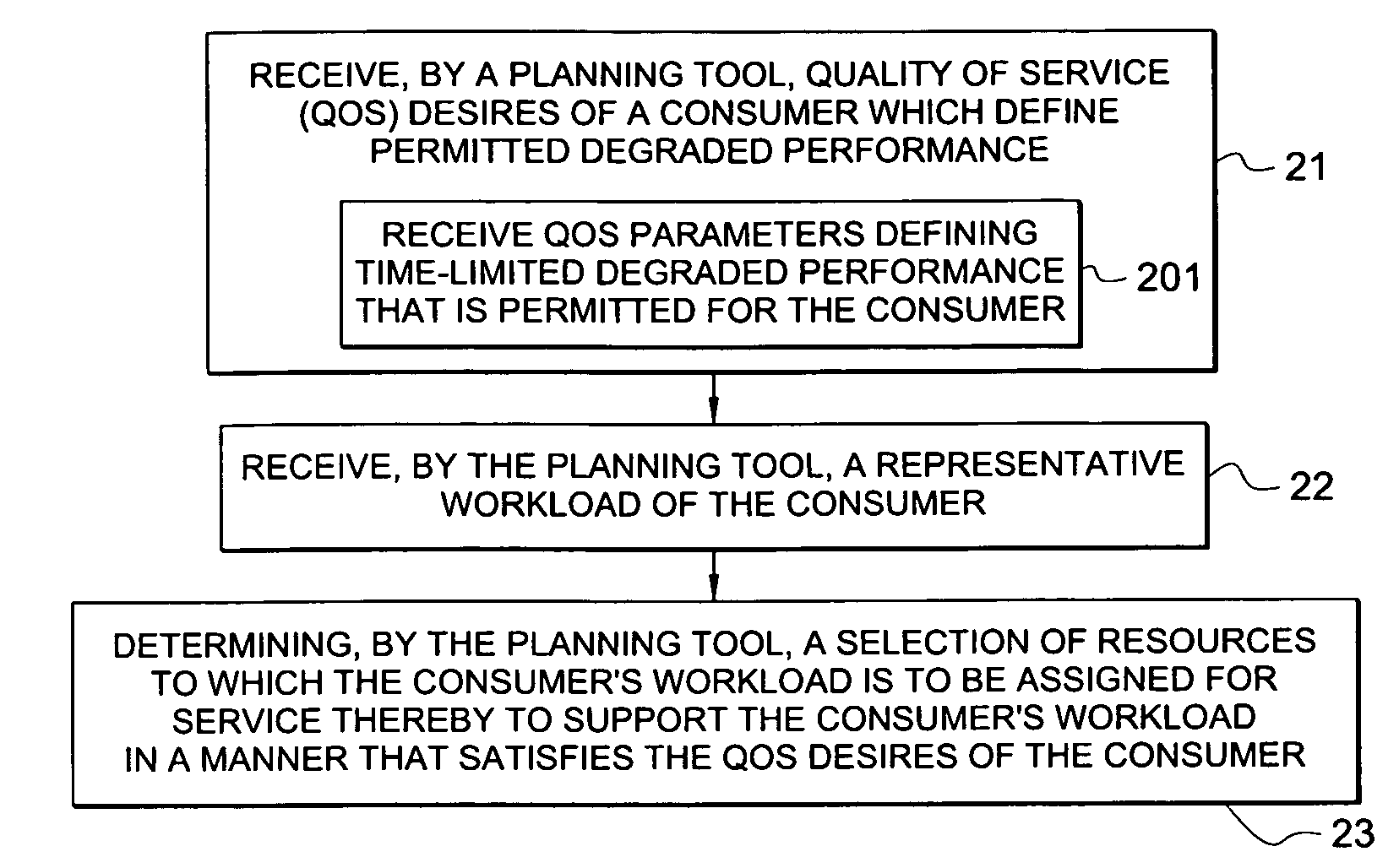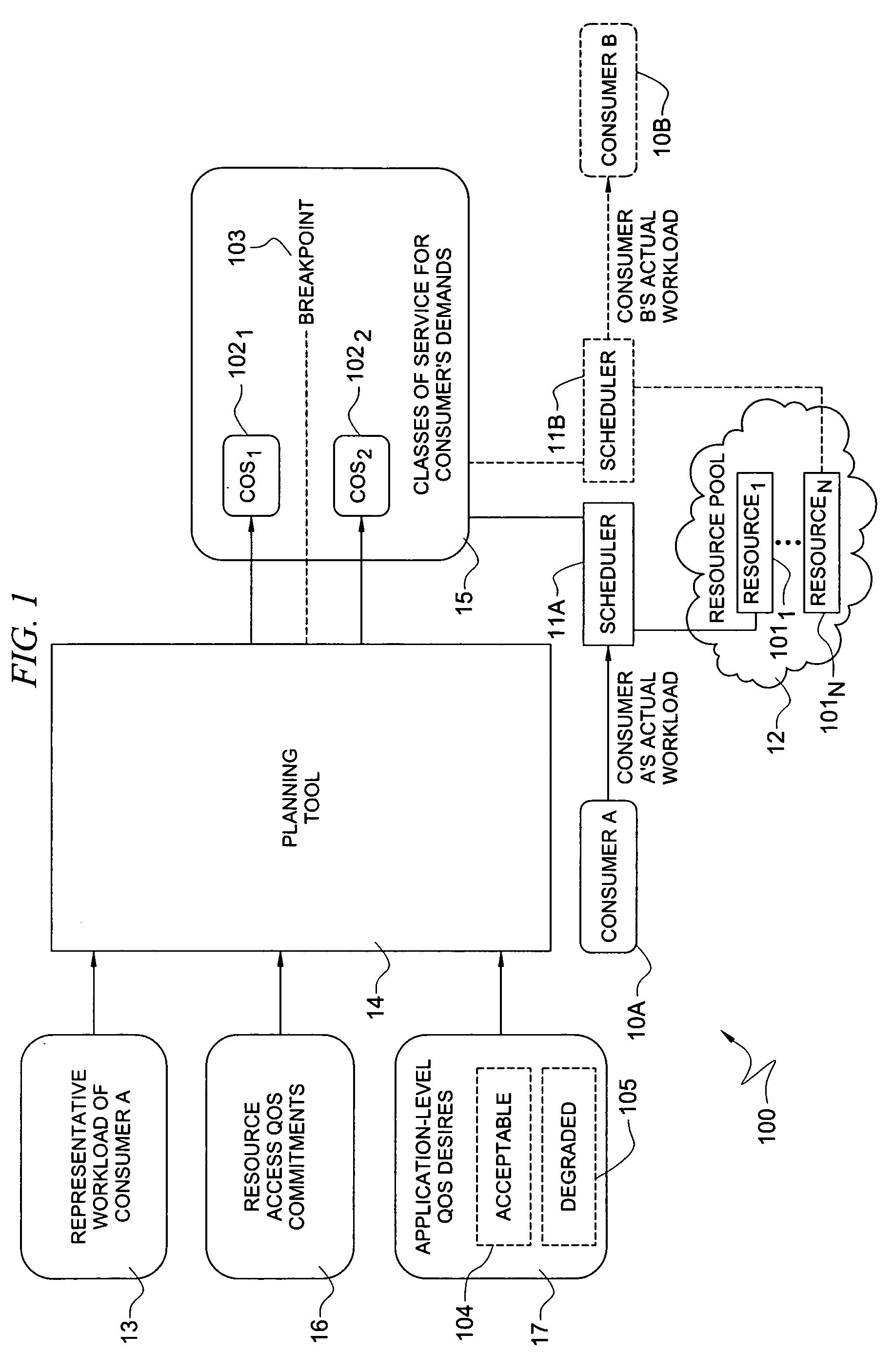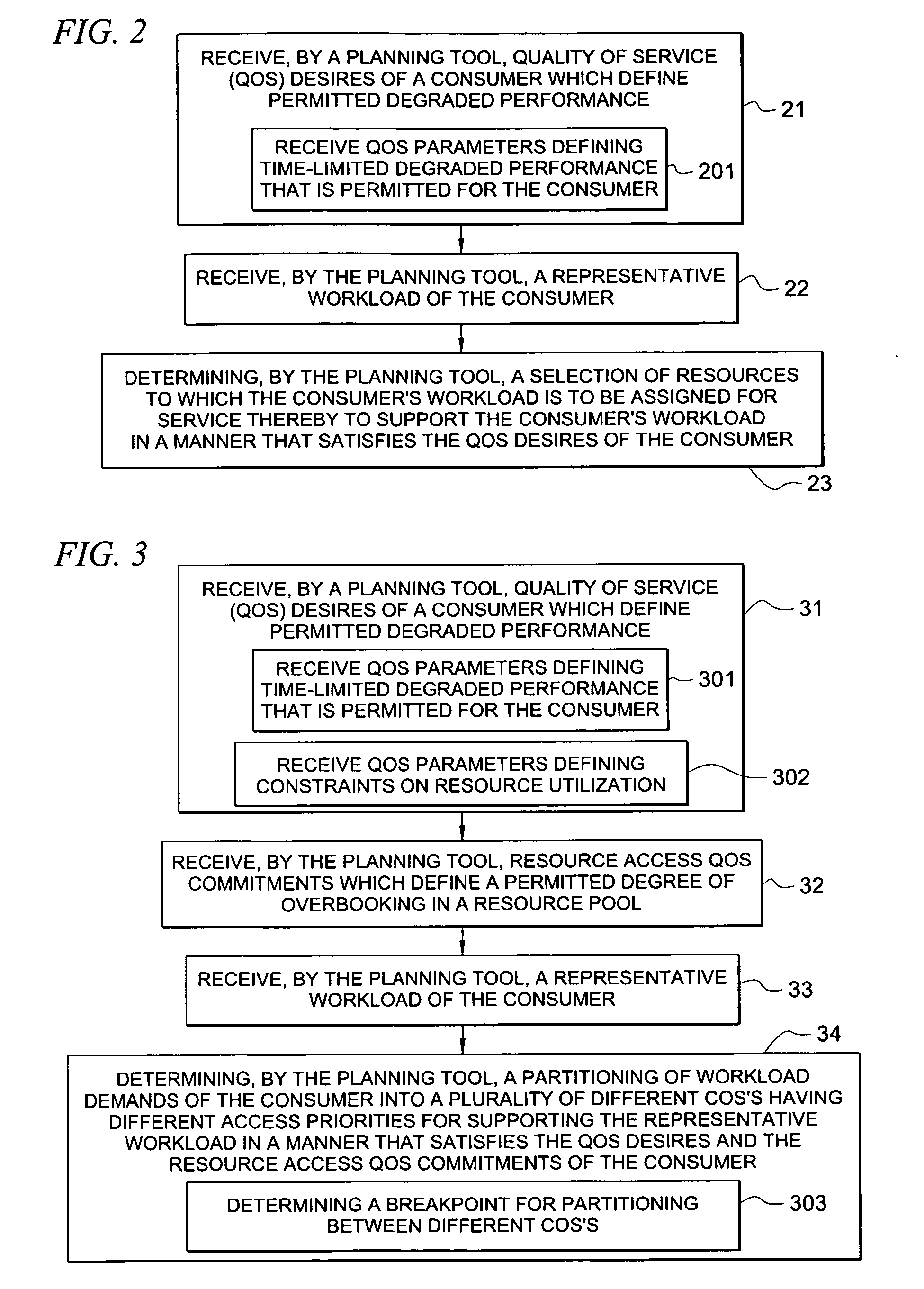System and method for determining allocation of resource access demands to different classes of service based at least in part on permitted degraded performance
a resource access and allocation method technology, applied in the field of managing access to resources, can solve the problems of reducing the capacity allocation of resource pool resources to support the workload of the remaining consumers, consuming the capacity of the consumer's workload, and leaving the remaining consumers with insufficient capacity for supporting their respective workloads
- Summary
- Abstract
- Description
- Claims
- Application Information
AI Technical Summary
Problems solved by technology
Method used
Image
Examples
Embodiment Construction
[0020]As described further herein, exemplary techniques for partitioning demands of a consumer's workload into a plurality of different classes of service (“COSs”) having different access priorities are described in co-pending and commonly assigned U.S. patent application Ser. No. 11 / 134,681 filed May 19, 2005 titled “SYSTEM AND METHOD FOR DETERMINING A PARTITION OF A CONSUMER'S RESOURCE ACCESS DEMANDS BETWEEN A PLURALITY OF DIFFERENT CLASSES OF SERVICE,” the disclosure of which is incorporated herein by reference. In certain embodiments of the exemplary techniques described therein, a user (e.g., owner of a resource consuming application) can define certain constraints on resource utilization (e.g., an acceptable range for Ulow and Uhigh, which are also described further herein). Further, in certain embodiments of the exemplary techniques, a user (e.g., resource pool operator or owner of the consuming application) can define certain resource access QoS objectives (which may be refe...
PUM
 Login to View More
Login to View More Abstract
Description
Claims
Application Information
 Login to View More
Login to View More - R&D
- Intellectual Property
- Life Sciences
- Materials
- Tech Scout
- Unparalleled Data Quality
- Higher Quality Content
- 60% Fewer Hallucinations
Browse by: Latest US Patents, China's latest patents, Technical Efficacy Thesaurus, Application Domain, Technology Topic, Popular Technical Reports.
© 2025 PatSnap. All rights reserved.Legal|Privacy policy|Modern Slavery Act Transparency Statement|Sitemap|About US| Contact US: help@patsnap.com



